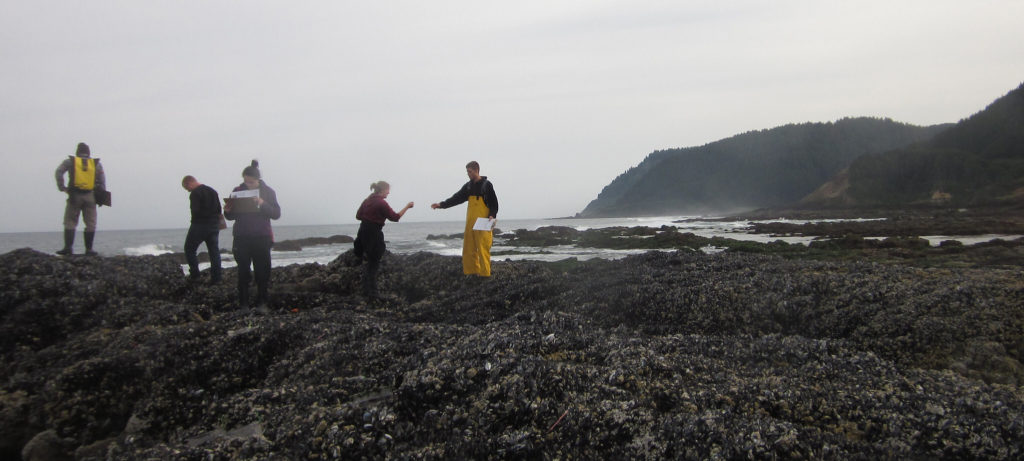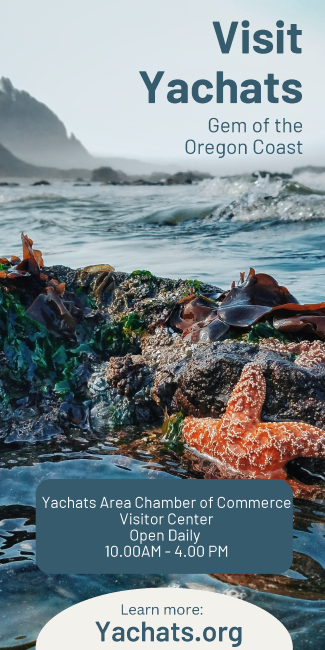
From Oregon Public Broadcasting and OSU News Service
NEWPORT — Climate change is weakening communities of colorful creatures in the rocky intertidal zone on the Oregon Coast.
Many Oregonians learn about these ecosystems on tidepooling trips to the beach. New research from Oregon State University suggests that the intricate and visually stunning communities of sea stars, anemones, mussels and more are struggling to recover after disturbances to their environment.
The researchers say that as major disruptive events like marine heatwaves or disease epidemics become more frequent with climate change, these ecosystems could eventually reach a “tipping point” where species start to disappear from Oregon’s intertidal zone.

“What we’re taking this as is an early warning sign that things might be changing,” said Sarah Gravem, a research associate at OSU.
Gravem, biology professor Bruce Menge and colleagues in the OSU College of Science looked at six sites in three distinct regions of Oregon’s low intertidal zone from 2011 to 2019. The regions are Cape Perpetua just south of Yachats, Cape Foulweather to the north and Cape Blanco to the south.
At every site the scientists created five “disturbed plots,” each a half-meter square. Once a year those plots were cleared of all life forms big enough to be seen with the naked eye: limpets, mussels, sea anemones, barnacles, seagrass, sponges, snails, crabs, sea stars, etc.
The plots were photographed regularly and from those pictures, researchers could gauge the rate of recovery on each plot. If the ecological communities surrounding the plots were stable, the plots would show steady recovery patterns following each clearing. That was not what happened, the researchers found.
Generally, the disturbances caused communities to move toward structures dominated by bare space and “weedier” life forms like barnacles and filamentous algae.
“And in all cases, over time the rates of recovery slowed and also became more variable,” Gravem said, indicating that an ecosystem is on the verge of a shift.
“On the Oregon coast, the factors behind that increasing variation appear to be coming from changes in ocean currents and thermal disruptions like marine heat waves, which can alter growth, decrease colonization rates and kill organisms,” she said.
Not at tipping point, yet
The research doesn’t necessarily indicate that the iconic rocky regions of Oregon’s shoreline are nearing an ecological tipping point where sudden, often irreversible ecosystem changes happen, the scientists say. But the findings aren’t good news either, they say.
“The speed of recovery was slowing down,” said Menge, the study’s lead author. “Each year, the system got further and further away from what the original system had looked like.”
The creatures that occupy the intertidal zone are not necessarily on the path to extinction, but the research indicates that the effects of climate change could get them there quicker. And if one dominant species disappears, it could have cascading effects on the rest of the intertidal zone.
For example, if mussels disappeared from the coastal ecosystem, species that depend on mussels for food or shelter would likely soon follow. Then the species that depend on them would disappear, and so on and so forth.
“This system, it’s not a forest, it’s not a grassland. It’s not something that people typically live in,” Menge said. “But it’s a model system for how these other systems might change.”
Gravem noted that species occupying the intertidal zone are very resilient and that many people are working to find solutions to the climate crisis. In that, she finds hope for preserving these kaleidoscopic coastal ecosystems.
“These systems will come back if we give them the breathing room,” Gravem said. “If we listen to the folks that are at the forefront of climate solutions, it will be fine. We just have to do what they say.”



















